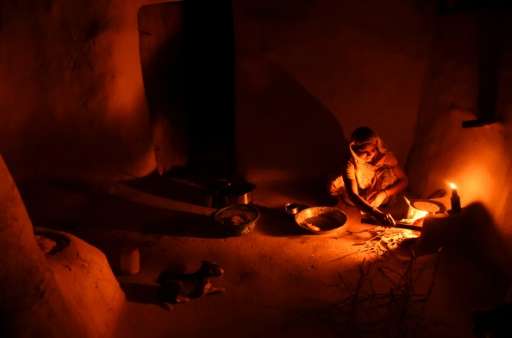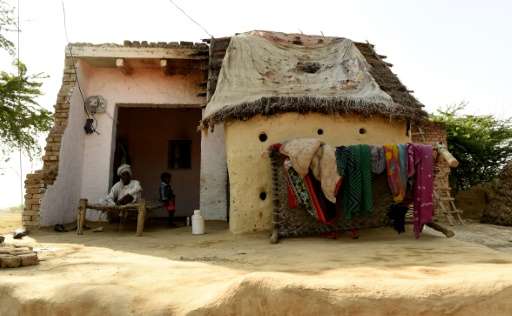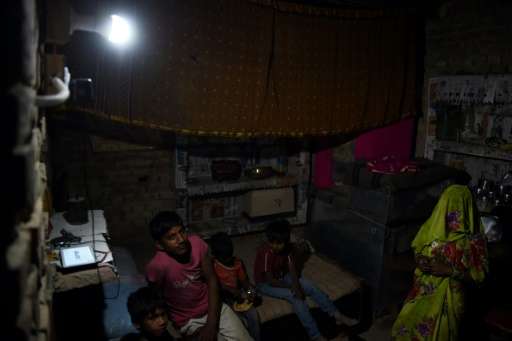Lights finally come on for Indian village

Ram Kishore searched long and hard to find a suitable wife for his son, but his efforts only paid off when electricity finally came to his village in rural north India this year.
It was not until the power pylons were installed as part of a government scheme to connect thousands of villages to the national grid that Kishore could persuade a prospective bride's parents to part with their daughter.
Now he is all smiles as he sits under a glowing light bulb in his single-room home in Anandpur village. Just 145 miles (230 kilometres) from the capital New Delhi, it has never had electricity—until now.
"I will personally invite my daughter-in-law's family to visit us and look at the electricity meter," the 60-year-old former labourer told AFP proudly after his house was connected.
Anandpur is just one beneficiary of an ambitious plan Prime Minister Narendra Modi announced in his Independence Day speech last August to bring electricity to 18,452 Indian villages.
Government figures released last year showed that more than 300 million people in India—the world's fastest-growing major economy—still had no access to electricity.
Per-capital electricity consumption is barely one third of the global average.
Speaking from the ramparts of the Red Fort in Delhi, Modi said those villagers had been "deprived of the rays of development," promising to finish the job within 1,000 days and saying the country was "not ready to wait for 10 years".
It has not been an easy task.

Dinesh Arora, who runs the scheme for the power ministry, says the communities targeted are the "the toughest villages in most extreme corners of the country".
Many cannot be reached by road or are in areas riven by violence.
Two of Arora's engineers were kidnapped and roughed up by Maoist guerrillas, while another team had to swim across a river to reach their destination.
Even once they reached the villages, some were given a hostile reception by residents suspicious of local governments that had given them little help in the past.
India's federal structure has added to the challenges, with electricity provision usually handled at the state level.
Each state has its own, often loss-making power providers, which are not always eager to extend provision to the poorest villages where revenues are unlikely to justify the cost.
Nonetheless, since Modi launched the scheme, nearly 11,000 villages have been connected to the grid.
'Everything will change'
As the main power line to Anandpur is switched on, the local men who had gathered excitedly round the visiting officials to watch the run screaming towards their mostly mud and brick houses yelling, "did it come?".

"My husband has promised that we will now buy a fan and sleep peacefully at night, without mosquitoes," said Urmila Devi, who lived in a village with electricity before she married and has had to get used to kerosene lamps in Anandpur.
Each of the village's 120 residents has a different take—some women are looking forward to being able to cook indoors even after dark, which has been impossible without electric lighting.
For young men like farm labourer Neeraj Singh, electricity means have a mobile phone that works.
"Having to use a solar cell to charge was time consuming and my phone battery would stay flat for days every month," he says.
For the children of the village, most of whom children cannot read or write and have never been to school, electricity means being able to carry on playing even after sunset.
"I had once watched television at my aunt's place and really enjoyed it," said Lakshmi.
"Now, I will ask my father to get us one."
Only 18 of the 25 households in Anandpur agreed to get connected and have the free electricity metre installed—the other seven were unsure they could afford the monthly bill of between $1 and $2.
But 55-year-old Devi is certain that the arrival of electricity is a boon for her village.
"Everything will change now," she said.
© 2016 AFP



















